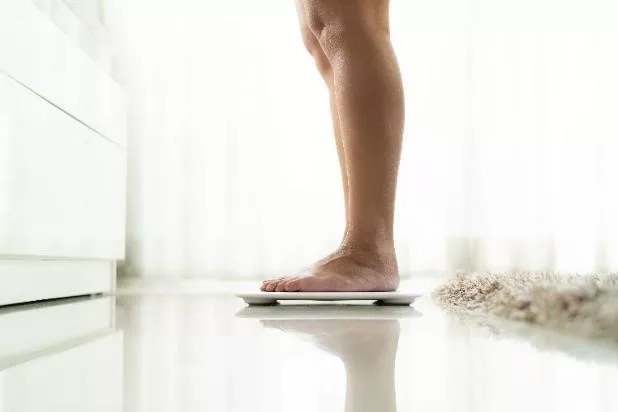Ways to reduce stress when you are expecting
Ways to reduce stress when you are expecting

Mothers, whether for the first time around or having their fourth and final child, all need to be able to relax. It is important for the health of both the mother and her unborn child because stress can lead to significant health risks. Reducing a pregnant mother's stress level is not only her job, but her partner's as well.
Friends and family

Talk to others about your emotions and how you're feeling. You can talk to your partner, family, friends, or your own doctor. Communication with others and knowing that you have people who are on your side willing to help can go a long way in reducing stress while you're pregnant. Friends are especially helpful in the later months, when it gets harder for the pregnant woman to move around. If there are too many errands to run or the housework is overwhelming, be sure to ask for help. Friends and family are almost as anxious as you are about seeing the new addition and want the baby to arrive as safely as possible, so they'll be more than happy to help out in whatever way they can.
Bubble baths
Bubble baths become quite a chore toward the end of the third trimester, so take advantage as much as possible while you can. Select the soothing music of your choice, light a few candles, turn the lights down low, sprinkle your favorite bubble bath, oil, or bath salts into the tub, close your eyes, and enjoy the tranquility of a long soak.
A bubble bath can do wonders for those aches and sores you have been developing and get rid of all the exhaustion you have been experiencing during pregnancy. It also helps in moisturizing the whole body, which may be difficult during the period of pregnancy.
Leisure time

Minimise your exposure to worrisome issues and you’ll minimise your stress. Sometimes, too much information about pregnancy complications and problems can cause unnecessary stress. If your pregnancy is proceeding along normally without any complications, reading about these possible problems can make you stressed for no real reason. Listening to relaxing music can help you feel better and less stressed during your pregnancy. It can also help you learn how to relax your mind and muscles during labour and birth, which can be very helpful.
Massages
One of the best ways to keep yourself physically relaxed is either by visiting a salon or getting a relaxing massage. Use an aromatherapy oil blend to help influence the senses and ease the stress away. For partners: Careful consideration of her feet, legs, hips, and lower back is a must. Take time to pamper yourself during your pregnancy. Massage is beneficial during pregnancy (be sure to visit professional massage centres who can deal with pregnant mothers) because it:
- aids circulation, helping with blood pressure control.
- creates tranquil relaxation to relieve depression, anxiety and reduce stress.
- alleviates muscle cramp and discomfort.
- reduces stress on weight-bearing joints.
- can help the mother sleep more peacefully and restfully.
- stimulates glandular secretions, which helps stabilize hormone levels.
Exercise

Exercise has huge stress-reducing qualities. It will also leave you feeling more energetic and ready to tackle the day's challenges. Be sure to consult your doctor before doing anything too strenuous, but some simple stretching exercises are a good start. Walking is another activity you can do in order to keep fit and reduce stress. Exercise can also help make labour easier and lessen some of the stress that comes with the thought of giving birth. One more thing to keep in mind is that sex is an exertion as well. The good news is that sex doesn't stop at conception.
Laughter
Laughter is a great way to reduce stress during pregnancy. Laughter releases chemicals in the brain that improve our mood and help us feel better. Take some time during your pregnancy to rent some comedies. Spend a quiet evening or afternoon watching movies that make you laugh. Look for the amusing things that naturally happen around you. Laughter will make you feel happier and more relaxed.
Mini-vacation

With the expenses of having a baby, vacations are typically not feasible. However, you don't have to spend money to go on a short excursion. There are fun things to do all around you, like going to a zoo, a museum, or a free concert. Here's a place to let your creativity flourish. A pretend bed and breakfast get-away for you and your partner is a fabulous idea. Make the provisions a day or two in advance, so there's little to do but enjoy the goodies. Launder your sheets and leave special touches like mints on the pillows and the edges turned down, then stay in bed cuddling the entire morning.
Sleep

Get plenty of sleep. The less sleep you get, the more stressed you are likely to be. If you find you are having trouble sleeping, invest in a comfortable body pillow, some new sheets, and even a white noise machine to help block out outside noises and help promote more restful sleep. A pillow positioned between your knees and thighs will help keep your body aligned properly and aid in sleep. You may find it helpful to take a relaxing bath before bed. Try not to drink beverages in excessive amounts right before bed. It will reduce your trips to the bathroom to a minimum.
Water therapy

Water is highly important for more reasons than just keeping your body hydrated. A common reason for headaches is a lack of water in the system. Your doctor should have prescribed vitamin supplements containing folic acid. The nutrients are important to decrease birth defects, but they're for you as well. The baby is tapping into your resources, so maintaining a healthy diet is crucial. Be sure to reduce your intake of caffeine. Believe it or not, there are stress-reducing foods out there, and they're all in the veggie and fruit section. So, be certain to consume the US Food and Drug Administration recommended requirements.
Recent Blog Posts
- 01 Aug 2025
- 02 Jun 2025
- 28 Mar 2025
- 10 Nov 2023
- 19 Oct 2022
How to handle work during pregnancy
How to handle work during pregnancy

Bringing a new life to this world can be a full-time job. And this is a problem if you already have a full-time job. We will let you know how to handle some issues in the coming months. And it all starts with:
Making the announcement
It’s going to be difficult not to spill your secret right away. You will have the butterflies to share it with your colleagues, but the conventional wisdom says it’s good to keep the news to yourself until the first trimester is over.
Make sure your boss is the first one to know. You want him/her to hear it directly from you and not from any office grapevine. Keep your tone upbeat and positive when you tell your boss, and avoid giving too many personal details. Do be prepared with a general idea of the company’s maternity leave policy, but don’t talk about the specific time length of the leave. Just provide an assurance to your boss that productivity won’t be hampered. Once you have informed your boss about the situation, go ahead and tell your colleagues and friends.
Managing morning sickness
Many mothers in the first trimester experience nausea, vomiting, and other discomforts. If you have morning sickness (up to 85% of pregnant women do, though not necessarily only in the morning), the best advice is to eat, eat, eat. Small healthy snacks throughout the day can keep your blood sugar steady and curb nausea. Just in case, try and grab a seat near the door during meetings, so you can do the disappearing act when time calls. You may also put a few plastic bags or packets inside to prepare for vomiting emergencies.
Fighting fatigue
Your biggest challenge will probably be fighting fatigue. A brisk walk at lunchtime can do wonders, as chewing mint-flavoured gum is instantly refreshing. Be careful not to work for long hours in the office; take time to walk outdoors every single day; and have more supplemental oxygen, thus keeping off sleepiness, which also benefits the unborn baby.
Stretching out

If you are in a sitting job, stand up every 20 minutes and walk around the office. Go see a co-worker instead of sending her an e-mail, go to the drinking fountain to have water, or simply walk around. Since your blood volume has grown a lot, it's important to improve the blood flow in your legs. After a period of time at work, it is important for mothers to do appropriate stretching exercises, get into the habit of leg lifting exercises, etc. These can reduce swelling of the legs and ankles and reduce leg edema.
Safety while commuting
Mothers should also pay special attention to safety while travelling. In the early and mid-pregnancy stages, take precautions such that you do not need to ride for a very long time. Avoid traveling during peak hours as this may result in poorer air quality, making a pregnant woman more nauseated and breathless.
Work conditions
There are professions which may involve more health risks than others, but, as a rule, you must work in a well-ventilated place if you are handling chemical products or have adequate protective equipment to avoid direct contact. Working in places where you may be exposed to biological elements is another situation you must take into account. You must be careful not only if you work in the medical profession but also if you are in contact with a sector of the population that may be more prone to contracting certain illnesses, such as young children in daycare and school, who usually suffer from more illnesses because their immune systems are still developing. Also, if you work with animals, you must take the necessary precautions to avoid contact with viruses or bacteria that could affect you.
Stay hydrated

Stay well hydrated while at work. Drink a lot of water even if you have to go to the bathroom often (those walks will do you good). And don’t forget to follow a well-balanced diet and rest as much as you can at home.
Squeezing in appointments
Try to schedule doctor’s appointments wisely—plan the doctor’s appointment before you report to work. Always try to be the first patient in the morning or in the afternoon session. You may consider doing some light work in case you are stuck in a traffic jam and get frustrated. It’s also important to schedule your appointments according to your work calendar—completely avoid days when you know you have your weekly meetings or monthly presentations. Occasionally, your doctor may need you to stay for additional tests or treatments, and you don’t want to have the added stress of missing an important work function.
Making the grand exit
Before you can say goodbye to work, you need to hammer out all the details of your leave. Notify your boss of the precise day that you expect to leave and the tentative date of your return; this just helps your boss see the light at the end of the tunnel.
Before you make the grand exit to motherhood, do the necessary handover to your colleagues who will be handling your responsibilities while you are away. Do let your boss know about some specific problems which might require special attention while you are away. Just make sure that you don’t stretch yourself by promising too much too soon. And always remember, your priority in the next few weeks will be you and your new baby.
Recent Blog Posts
- 01 Aug 2025
- 02 Jun 2025
- 28 Mar 2025
- 10 Nov 2023
- 19 Oct 2022
Techniques to lose post pregnancy weight
Techniques to lose post pregnancy weight

Having a baby is a wonderful experience for any woman. After enduring nine months of pregnancy symptoms, including five to six months of extra weight, it's quite natural to want to normalize your weight and regain your pre-pregnancy shape as soon as possible. However, it is probably safest for both the mother and child for the mother to wait at least three months before starting out on a weight loss program.
Weight loss after pregnancy is possible, but it requires some realism, patience, and a lot of work. It is reasonable to assume that it may take a new mom about 8 months to a year to get back into your previous shape.
Drink plenty of water

One sure-fire way to begin losing weight is to drink plenty of water. Drink at least 10–12 glasses of water every day. Water will help your body flush itself of excess fat and impurities. Replace your high-sugar beverages such as sodas and juices with some water and a squeeze of fresh lemon. Drinking plenty of water throughout the day prevents you from getting dehydrated. It also fills you up so that you don't eat as much, and some research has found that it may speed up your metabolism.
Adopt a healthy diet

A healthy diet is the best way to lose your pregnancy pounds. Keep healthy snacks such as raisins, popcorn, wheat crackers, and nuts handy. Refuse to buy store-bought baked goods or junk food. Eat whole grains (breads, cereals, pastas) instead of the "white" versions. Talk to your doctor about which foods are important for the continued health of you and your baby. Focus on nutrition, not on weight-loss diets! If you're breastfeeding, your baby's nutritional needs outweigh your need for a slim body.
Start light exercise

As soon as you feel ready, start light exercise. Combined with a healthy diet, exercise is key if you want to lose weight after pregnancy. 3-5 days of cardio (30–40 minutes) and 2–3 days of strength training is ideal. You may also opt for a 10-minute walk with the baby every day and slowly increase your time to 20 minutes per day. Babies can be worn in a sling or you can use a baby jogger or stroller when they get too heavy. During pregnancy, your womb grows to make room for the baby, and so does your skin, which leaves stretch marks. Exercises will slowly bring your stomach back into shape and shrink the skin. Do not overdo any exercise for immediate results. If the delivery was normal, you can start exercising within a few weeks.
Consider joining a gym and trading babysitting hours with a friend so when you each go to do your workout, the other can watch the babies. Some gyms may offer babysitting services as well.
Breastfeeding can help you lose weight as it burns about 500 calories per day. So, the longer you breastfeed, the more calories you burn. However, breastfeeding alone won't bring down your weight. You need to combine it with a sensible diet and a moderate exercise program. Now isn't the time to go on a diet; restricting your calories too much can reduce your milk supply, and losing too much weight (more than two pounds a week) can actually release toxins that wind up in your milk. Keep in mind that you need to have at least 1800 calories a day while breastfeeding in order to keep yourself and your baby healthy. The good news is, you can still exercise if you're breastfeeding. Studies show that moderate exercise won't affect milk production as long as you're giving your body enough calories.
Do pelvic floor strengtheners
Benefits: Pelvic floor strengthening exercises are designed to improve circulation in the pelvic region. It also helps in maintaining your vaginal canal in tip-top shape.
The Process: Lie down on the floor on your back. Now bend your knees, keeping your feet on the floor. Try tightening your vaginal muscles as if you are hindering urinary flow. Hold on for a few seconds. Repeat it two or three times.
Avoid artificial sweeteners
Avoid artificial sweeteners when you are working to lose pure body fat. That means no candies, no cakes, no soft drinks, and no sugar in your coffee or tea.

Do not even drink diet soda because it contains sugar as well, albeit in a smaller amount. Check food labels carefully during this period to make sure that the foods you eat do not have any sugar content. It is important to completely abstain from refined sugar diets if you want to lose weight after pregnancy as quickly as possible.
Get some sleep

It may seem impossible to get a full eight hours of sleep when you have a baby summoning you like clockwork throughout the night, but being sleep deprived could make it harder for you to shed the baby weight. Studies show that getting at least 7.5 hours of sleep per night can help you lose weight. When you're tired, your body releases cortisol and other stress hormones that can promote weight gain. At least until your baby starts sleeping through the night, try to catch as many naps as you can during the day and go to bed early.
Forget about celebrity moms who lose weight instantly. It's not a good idea to try to look like a celebrity because they often lose their baby fat too quickly by going on strict diets and doing hard workouts. So for these new moms, losing weight after pregnancy is often accomplished much faster than for average women. These are not a good example upon which to base your own postpartum weight loss goals.
Just remember that it took nine months to gain the weight; give yourself at least that long to take it off. So if you are a new mom and you can't wait to get back into shape, take my advice and "Go Easy!" Trying to lose weight too fast can, at times, rebound on you.
Recent Blog Posts
- 01 Aug 2025
- 02 Jun 2025
- 28 Mar 2025
- 10 Nov 2023
- 19 Oct 2022
Tips to relief your backaches
Tips to relieve backaches during pregnancy

You may be facing occasional or frequent backaches that disturb your sleep or daily life now that you are in your third trimester with that expanding baby bump. However, the good news is that your baby is growing. It is common for most pregnant women to have lower back pain in the second half of their pregnancy.
Some of the possible reasons are weight gain, posture changes, or muscle separation. Women typically gain 12 to 15 kilos of extra weight during pregnancy, and the spine will have to support that extra weight of a growing baby. Naturally, it puts more pressure on the spine, causing your lower back to hurt. Moreover, hormonal changes can cause loosening of joints and ligaments that are attached from your pelvic bones to your spine, which can cause discomfort or pain when you walk or stand for too long.
Many mothers have gone through these problems during their pregnancy, so fret not. Here are some tips to help you stretch out that lower back pain:
Tip #1: Change your posture

Using proper posture when sitting or standing can make a difference to your backache problems. Although slouching can be a comfortable posture, it puts more strain on your spine. So be sure to sit or stand up straight to lengthen the spine. For instance, if you are standing, try to keep your bottom tucked in and your shoulders back. Even though it can be tiring and requires some time for you to correct your posture, remember that it can help to reduce your backache over time.
Tip #2: Stretching exercises

A good prenatal yoga session can help strengthen and support the core muscles of the lower back. Stretching the muscles will increase flexibility, which will loosen the tightness. It could be a light exercise that can be done at home. You could also ask your partner to help you stretch. This would be a great way for your partner to get to know you and your baby-to-be. Before starting a new or special exercise plan that requires more intense movements and physical strength, you should always talk to your doctor.
Tip #3: Treat yourself to a massage

Massages can help you feel less stressed, help you relax, and help you deal with the pain of backaches. A trained therapist may be able to help with your back pain because they know where a pregnant woman's sore spots are likely to be and what areas and techniques to avoid on a pregnant woman. It is critical to communicate your needs to your therapist, as well as any discomfort caused by the massage and/or positioning.
Recent Blog Posts
- 01 Aug 2025
- 02 Jun 2025
- 28 Mar 2025
- 10 Nov 2023
- 19 Oct 2022
Gestational diabetes mellitus: what is it?
Gestational diabetes mellitus: what is it?
By Dr. Pamela Tan
Obstetrician and Gynaecologist
MBBS (Singapore), MRCOG (UK), FAMS (Singapore)

Diabetes mellitus, or diabetes, is a chronic condition where the body is unable to produce any or enough insulin, resulting in excess sugar (glucose) levels in the blood. This may sound all too familiar, but it is mainly because of the sobering statistics in Singapore and around the world.
According to the International Diabetes Federation (IDF), there were over 606,000 cases of diabetes in Singapore in 2017. It could be your mom, a friend, or a coworker who has it. However, beyond the numbers is a string of health concerns that come with it and could potentially result in When it affects a woman in a vulnerable state like pregnancy, it warrants immediate attention to ensure the safety of both the mother and the baby.
So, if you’re expecting or planning on getting pregnant soon, it’s important that you’re also aware of the type of diabetes that strikes during pregnancy. It pays to keep your guard up because any woman could potentially develop it.
What is gestational diabetes mellitus?
Gestational diabetes mellitus (GDM) is a type of diabetes that develops during pregnancy, usually during the second or third trimester. Those who develop it usually don’t have diabetes before pregnancy, but it also goes away after giving birth. However, some women go on to develop type 2 diabetes later in life.
While it is true that any complication in pregnancy is a cause for concern, the good news is that gestational diabetes is controllable. Complications are less likely to happen if you eat right, exercise regularly, and take insulin as prescribed.
What causes GDM?
Insulin is the type of hormone that keeps blood sugar levels in check. However, pregnancy hormones can interfere with how the body uses insulin. An example would be the increase of human placental growth hormone at 15 weeks of pregnancy, which increases blood glucose levels.
Normally, the body responds by making more insulin during pregnancy to meet the changing demands of the body. However, for some women, their systems are unable to make enough insulin, causing blood sugar levels to spike, eventually leading to GDM.
Who is at risk of GDM?
Women are considered high-risk candidates for GDM if they fall under any of these:
- Have a pre-pregnancy BMI of more than 30
- Have a GDM history
- Have pre-diabetes history
- Have a history of polycystic ovary syndrome
- Have delivered a baby that is 4 kg and heavier
- Woman is 40 years old or older
Women below the age of 40 can do an online diabetes risk assessment, here.
What are potential complications?
The main reason for controlling GDM is to avoid complications that can range from mild to potentially fatal. It not only affects the mother, but the health and well-being of the baby even beyond the womb.
Maternal
- Pre-eclampsia (high blood pressure during pregnancy)
- Preterm labour
- Polyhydramnios (excessive amniotic fluid)
- Miscarriage
- Severe vaginal tears due to a large baby
- Heavy bleeding after delivery
- Risk of type 2 diabetes in the future
Foetal
- Premature birth
- Stillbirth
- Large for gestational age baby
- Breathing problems
- Jaundice (a condition where the skin, the whites of the eyes and mucous membranes turn yellow)
- Shoulder dystocia (an emergency when the head is delivered but the body is stuck)
- Low glucose levels
- Risk for childhood obesity
- Risk of developing diabetes later in life
How is GDM screening done in Singapore?
First trimester
In Singapore, women who are at high risk are checked during the first trimester to see if they have diabetes that hasn't been diagnosed yet. This is usually done around the 12th week of pregnancy together with routine pregnancy blood tests for infection screen, hemoglobin level, and blood group. If the results are normal, the woman is re-evaluated for GDM at 24-28 weeks of gestation.
24-48 Weeks
It is protocol that all women be screened for GDM within this period, including those who had normal results in the first trimester. It was found that there is increased resistance to gestational insulin at this stage.
To ensure proper monitoring, Universal screening is preferred over risk-based screening because Asians generally have a high incidence rate of GDM. This lets health care workers find more cases of GDM and make things better for both the mother and the baby.
They do the test by using the 3-point 75g Oral Glucose Tolerance Test (OGTT). An OGTT requires you to drink a glucose solution after a night of fasting. After this, a blood sample is taken at the start, an hour later, and then again two hours later. A GDM diagnosis is made if any of the criteria below is met.
GDM diagnostic criteria
| Plasma Glucose Levels (values are in mmol/L) | Previous Recommendations | Current Recommendations based on IADPSG |
| Fasting | More than or equal to 7.0 | More than or equal to 5.1 |
| 1-Hour Post-OGTT | Not applicable | More than or equal to 10.0 |
| 2-Hour Post-OGTT | More than or equal to 7.8 | More than or equal to 8.5 |
Post pregnancy
Postpartum screening is a way to check on women who have had GDM in the past to see if their condition has gone away. Blood glucose levels should go back to where they were before pregnancy six weeks after giving birth. To check if it does, a 2-point (fasting and 2-hr) 75 g OGTT will be done within 6–12 weeks after delivery using non-pregnancy normal values. The same screening process is also done on women who are diagnosed with pre-diabetes or diabetes in their first trimester.
Women who received insulin treatment during pregnancy, or those who have a high risk of developing diabetes (e.g., obese or a family history of diabetes), are also required to have frequent follow-up check-ups. In fact, in Singapore, all women with a history of GDM must be screened for diabetes once every three years.
Why is HbA1c not advised when screening and diagnosing GDM?
HbA1c is a glycemic haemoglobin, which occurs when glucose in the blood sticks to hemoglobin, a protein within red blood cells. The test will reveal a person’s average blood sugar levels for the last 2-3 months.
It should not be used to screen for or diagnose GDM because it is insensitive to high blood sugar levels after meals. HbA1c levels won't give accurate results because they tend to be lower during pregnancy because there are more red blood cells being made and broken down.
How is GDM treated?
Treating GDM comes down to controlling blood sugar levels. This is accomplished through the following:
1. Eating wisely
- Be mindful of your carbohydrate intake
- Choose food options that have low glycaemic index (e.g. wholegrain bread, sweet potato, low fat yogurt, vegetables)
- Go easy on sugar
- Watch your food portions
- Eat meals on a regular basis to control appetite and blood glucose levels
2. Regular physical activity
Physical activity is particularly helpful in controlling blood sugar levels by redirecting resources. It increases the glucose needed by the muscles for energy. An active lifestyle also helps the body use insulin more efficiently. To avoid injuries, be sure to do low-impact exercises that are tailored for pregnancy.
3. Medications
- Metformin – an oral medication to help reduce the amount of glucose the liver produces; it helps insulin to work properly
- Glibenclamide – an oral medication that stimulates the pancreas to make more insulin.
- Insulin – an injectable hormone that allows glucose to enter the cells and be used for energy.
Take note that these medications must only be taken under medical advice. Like any other pharmacologic treatment, they still come with side effects and adverse reactions.
Managing gestational diabetes mellitus improves outcomes for you and your baby. Expectant moms, or even those who are still planning on getting pregnant, should not discount the importance of coming into this journey prepared.
So, if you have more questions, book a consultation here so we can discuss in detail and start with the necessary tests.
Recent Blog Posts
- 01 Aug 2025
- 02 Jun 2025
- 28 Mar 2025
- 10 Nov 2023
- 19 Oct 2022
Uncovering pregnancy myths
Dispelling pregnancy myths in Singapore
Written by:
Dr. Heng Tung Lan, Consultant Obstetrician & Gynaecologist
SOG-Heng Clinic for Women
(A member of Singapore O&G Group)

Do not worry, mommies-to-be; it is normal for you to feel overloaded with information and advice from well-meaning friends and relatives! However, you might be wondering what is true and what is not.
We hope to give you some clarity on the popular pregnancy myths out there. So, let us take a look at some of the common myths in Singapore.
Myth #1: I have to eat for two!

Many mommies-to-be will indulge in eating and snacking on whatever they like. This is especially so during the second trimester, when your appetite is at its best.
Fact: It is true that pregnant women need to increase their calorie intake. However, excessive weight gain will be harder to shed off in the future, and this may jeopardise both your and your baby’s health. It is therefore important to focus on the quality of your diet and aim for a gradual increase throughout your pregnancy.
- 1st Trimester: No extra calories needed
- 2nd Trimester: Extra 300 – 400 calories per day is recommended
- 3rd Trimester: Additional of 450 – 500 calories per day
Avoid taking food that contains a lot of empty calories, even if it tastes good. Instead, incorporate nutrient-dense foods into your diet.
Myth #2: It's fine to gain weight during pregnancy. That's the only time I can feel fat without feeling bad!

Fact: There is no recommended fixed weight gain for all pregnant women. The recommended amount of weight gain is different for singleton, twin, and triplet pregnancy.
If we are looking at a healthy singleton pregnancy, your body mass index (BMI) pre-pregnancy is a key indicator. I personally would recommend my patients to keep their weight gain within 12 kg.
A weight gain of 5 to 9.1 kg is recommended for women with a BMI greater than 30.
However, you might want to work out a diet plan with your obstetrician if you have other health concerns or ask them what the healthy range of weight that you should be working on.
*Information adapted from Institute of Medicine Guidelines (IOM2009)
Myth #3: My mum says I shouldn’t be travelling during my pregnancy?

Fact: For mommies-to-be with normal and healthy pregnancies, it is generally safe to travel and fly until 28–32 weeks into your pregnancy. But different airlines may have their own rules or need a note from your doctor, so check before you go!
Flying is not recommended if you are facing pregnancy complications like:
- Preeclampsia
- Premature rupture of membranes
- Preterm labour
- Placenta Previa
In addition, it is important to always check with your obstetrician before flying, even if you are feeling good.
Here are some tips for flying while you are pregnant:
- If you are planning for a babymoon, plan to travel during your second trimester. This is the period when you are more likely to be over your morning sickness and feeling most energetic.
- Try to avoid long haul flights. I would recommend flights not more than eight hours as you will easily feel uncomfortable. Also, there are higher risks of deep vein thrombosis (DVT). So, do remember to stretch your body and move around whenever you can.
- Stay hydrated throughout the flight, keep up your water intake gradually.
- Always wear the seatbelt low around your pelvis, below your baby bump.
Myth #4: Pregnant women should avoid all types of exercises!

This is definitely a myth.
Fact: If you did not exercise on a regular basis before your pregnancy, you should discuss with your obstetrician whether your health condition allows you to engage in light-to-moderate activities.
It is safe and healthy to stay active during your pregnancy. This is especially so if you have always been active pre-pregnancy, and if your pregnancy has no complications.
You can continue to exercise as you did before becoming pregnant, or you can do light-to-moderate exercises like walking and swimming.
However, here are some activities to avoid:
- Contact sports like football and basketball
- Activities with risk of falling like skiing and rock climbing
- High-risk activities such as scuba diving and skydiving
Myth #5: No more coffee and tea for the next nine months!
While excessive caffeine intake has shown an increase in the risk of low birth weight, this does not mean you need to cut caffeine out totally.
Fact: Moderate consumption is safe. I recommend not more than 200mg/day of caffeine, so a cup of your favourite kopi or teh a day is fine.
However, do note that caffeine can also be found in chocolate, energy drinks, and soft drinks like Coke too.
Replace your caffeine intake with other alternatives like water, honey lemon, decaffeinated tea or coffee, and reduce your sugar intake as much as possible.
Recent Blog Posts
- 01 Aug 2025
- 02 Jun 2025
- 28 Mar 2025
- 10 Nov 2023
- 19 Oct 2022
Pagination
- Previous page
- Page 2
